Sapir-Whorf hypothesis
description: principle claiming that the structure of a language affects its speakers' world view or cognition
23 results
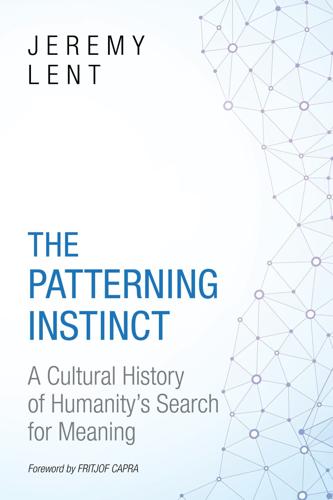
The Patterning Instinct: A Cultural History of Humanity's Search for Meaning
by
Jeremy Lent
Published 22 May 2017
Anthropologists in the early twentieth century became so entranced by the power of language to shape cognitive structures that they sometimes overstated the case, asserting that our native language forces us to think in certain ways and prevents us thinking in other ways. This theory, the Sapir-Whorf hypothesis, was witheringly attacked in the later twentieth century as researchers showed how people from a particular culture were able to adapt their cognition to culturally different ways of thinking even as adults. More recently, however, a plethora of new evidence has convincingly demonstrated a more refined version of the Sapir-Whorf hypothesis: that the language we speak from birth—although it doesn't prevent us thinking in different ways—establishes structures of cognition that influence us to perceive, understand, and think about the world according to certain patterns.
…
In the early twentieth century, Whorf was a student of anthropologist-linguist Edward Sapir, whose detailed study of Native American languages had caused him to propose that a language's grammatical structure corresponds to patterns of thought in its culture. “We see and hear and otherwise experience very largely as we do,” Sapir suggested, “because the language habits of our community predispose certain choices of interpretation.”5 Whorf took this idea, which became known as the Sapir-Whorf hypothesis, to new heights of rhetoric. The grammar of our language, he claimed, affects how we pattern meaning into the natural world. “We cut up and organize the spread and flow of events as we do,” he wrote, “largely because, through our mother tongue, we are parties to an agreement to do so, not because nature itself is segmented in exactly that way for all to see.”6 The crux of Whorf's argument was the contrast between the subject-verb-object grammatical structure of Indo-European languages and that of Native American languages such as Hopi.
…
Sometimes he went beyond the idea that language affects how we think to a more strident assertion that language literally forces us to think in a certain way. “The forms of a person's thoughts,” he proclaimed, “are controlled by inexorable laws of pattern of which he is unconscious.” This rhetoric led people to interpret the Sapir-Whorf hypothesis as a theory of linguistic determinism, claiming that people's thoughts are inevitably determined by the structure of their language.8 A theory of rigid linguistic determinism is easy to discredit. All you need to do is show a Hopi Indian capable of thinking in terms of past, present, and future, and you've proven that her language didn't ordain how she was able to think.

Through the Language Glass: Why the World Looks Different in Other Languages
by
Guy Deutscher
Published 29 Aug 2010
(Benjamin Lee Whorf, “An American Indian Model of the Universe,” 1936) pu’ antsa pay qavongvaqw pay su’its talavay kuyvansat, pàasatham pu’ pam piw maanat taatayna Then indeed, the following day, quite early in the morning at the hour when people pray to the sun, around that time then, he woke up the girl again (Ekkehart Malotki, Hopi Field Notes, 1980) Malotki’s book goes on to describe, in 677 pages of small print, the numerous expressions for time in the Hopi language, as well as the tense and aspect system on its “timeless verbs.” Incredible how much a language can change in forty years. It is not difficult to comprehend why the principle of linguistic relativity, or the “Sapir-Whorf hypothesis,” as it has also come to be known, has sunk into such disrepute among respectable linguists. But there are others—philosophers, theologians, literary critics—who carry the torch regardless. One idea has proved particularly resilient to the onslaught of fact or reason: the argument that the tense system of a language determines the speakers’ understanding of time.
…
Humboldt went on to say, in somewhat mystical terms, that languages nevertheless differ in what they “encourage and stimulate to do from their own inner force.” He seems to have had the right sort of intuition, but he was clearly struggling to pin it down and never managed to get beyond the metaphors. Can we turn his hazy imagery into something more transparent? I believe we can. But to do so, we need to abandon the so-called Sapir-Whorf hypothesis, the assumption that languages limit their speakers’ ability to express or understand concepts, and turn instead to a fundamental insight that can be dubbed the Boas-Jakobson principle. FROM SAPIR-WHORF TO BOAS-JAKOBSON We have already encountered the anthropologist Franz Boas as the person who introduced Edward Sapir to the study of Native American languages.
…
When a language forces its speakers to pay attention to certain aspects of the world each time they open their mouths or prick up their ears, such habits of speech can eventually settle into habits of mind with consequences for memory, or perception, or associations, or even practical skills. If this all still sounds a little too abstract, then the contrast between the Sapir-Whorf hypothesis and the Boas-Jakobson principle can be brought into focus with another example. Chinese may seem to us rather lax in allowing its speakers to equivocate about the time of the action, but just try to imagine what a speaker of Matses from Peru might feel upon hearing about the incredibly crude and careless tense distinctions of English.
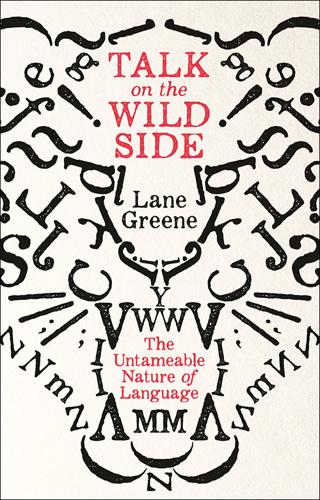
Talk on the Wild Side
by
Lane Greene
Published 15 Dec 2018
It can be seen as the idea of language taming taken to the extreme: that all natural languages are deficient, compromised by culture, and that an entirely new, unambiguous language based on logic would make for better thinkers. But Brown did not really show any ambition to replace lesser languages with Lojban; he seemed to be primarily interested in testing the Sapir–Whorf hypothesis by teaching it as a second language. Some Esperantists still believe in the fina venko, or “final victory”, when everyone on earth learns Esperanto. Not even the most enthusiastic Lojbanist expects that of Lojban. Wilkins thought his language would revolutionise science in 1668. Zamenhof thought that Esperanto would further world peace in 1887.
…
Twenty years ago, he wrote a grammar and description of the language filling 795 single-spaced pages. But Cowan has never been fluent in Lojban, saying that he’s no good at memorising vocabulary. (Most good Lojbanists, he says, are also good at learning natural languages.) While the early generation of Loglanists around James Cooke Brown were interested in the Sapir–Whorf hypothesis, very few would accept Brown’s strong formulation of it today. Is that because it’s too hard to speak at a conversational pace? Lojbanists insist that some speakers really can speak Lojban fluently. But even Bob Le Chevalier, who led the breakaway group that made Loglan into Lojban beginning in 1987, describes himself as just “moderately skilled” today.4 In any case, unlike Esperanto, nobody speaks Lojban with anything like native comfort.
…
Should the BBC switch to Lojban? Unlike English, it is exactly the kind of language that sticklers (including many journalists) think people should speak. It makes you communicate information precisely, after working out exactly what you want to say in your own mind. Many sticklers assume a lay version of the Sapir–Whorf hypothesis themselves: that thought itself depends on language. They worry that lack of careful attention to grammar threatens the entire enterprise of clear communication and even clear thinking. So before going on with more typical language tamers, those who think English is (or should be) perfectly logical, it’s worth listening to speakers of the world’s most logical language, which does not allow ambiguity and which requires careful assembly.
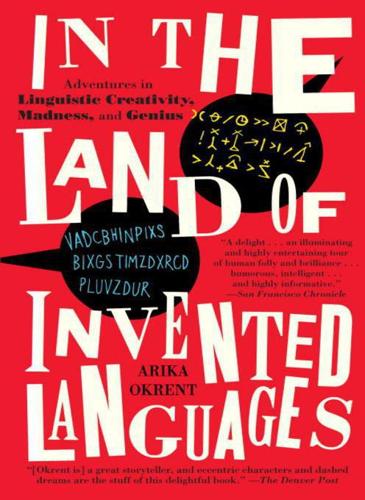
In the Land of Invented Languages: Adventures in Linguistic Creativity, Madness, and Genius
by
Arika Okrent
Published 1 Jan 2009
He never got a chance to fully explore the question. He died of cancer in 1941, at the age of forty-four. He left behind a number of papers on the topic—some published, some unpublished, some written for experts and some for lay audiences—that served as the basis for what came to be called the Whorfian hypothesis (or Sapir-Whorf hypothesis). The science-minded scholars of the 1950s reinterpreted Whorf's incomplete and complicated exploration of various issues having to do with language, thought, and culture as an empirically testable claim, hence the Whorfian “hypothesis.” The closest Whorf himself ever got to a hypothesis-style statement was a description of his “linguistic relativity principle,” which held that “users of markedly different grammars are pointed by their grammars toward different types of observations and different evaluations of externally similar acts of observation, and hence are not equivalent as observers but must arrive at somewhat different views of the world.”
…
A sociologist named James Cooke Brown, who had just taken a position at the University of Florida in Gainesville, was paying close attention. In the winter of 1955, when classes let out for the holidays, he “sat down before a bright fire to commence what I hoped would be a short paper on the possibility of testing the social psychological implications of the Sapir-Whorf hypothesis.” He wanted to show that “the construction of a tiny model language, with a grammar borrowed from the rules of modern logic, taught to subjects of different nationalities in a laboratory setting under conditions of control, would permit a decisive test.” If the problem with the Whorfian hypothesis experiment was that natural languages couldn't be disentangled from the cultures in which they were spoken, then why not avoid the problem by using an artificial language?
…
JAMES COOKE BROWN AND THE LANGUAGE OF LOGIC On Korzybski, see: Marvin Gardner, Fads and Fallacies in the Name of Science (Dover Publications, 1957). Michael Silverstein, “Modern Prophets of Language,” University of Chicago, MS, 1993. On Whorf, see: John E. Joseph, “The Immediate Sources of the ‘Sapir-Whorf Hypothesis,’” Historiographia Linguistica 23, no. 3 (1996), pp. 365–404. Penny Lee, The Whorf Theory Complex: A Critical Reconstruction (John Benjamins, 1996). John Lucy, Language Diversity and Thought: A Reformulation of the Linguistic Relativity Hypothesis (Cambridge University Press, 1992). Michael Silverstein, “Whorfianism and the Linguistic Imagination of Nationality,” in Regimes of Language: Ideologies, Polities, and Identities, edited by Paul Kroskrity (School of American Research Press, 2000).

My Life as a Goddess: A Memoir Through (Un)Popular Culture
by
Guy Branum
Published 29 Jul 2018
It described a shocking, striking power I hadn’t known existed but had maybe felt the edge of. This beautiful-sounding word (almost as euphonious as the word “euphonious”) had an even more beautiful, powerful meaning. Learning the meaning of the word “epiphany” was an epiphany. Again, I wanted more. The Sapir-Whorf hypothesis is an idea in linguistics that language influences the world we perceive. Edward Sapir said, “No two languages are ever sufficiently similar to be considered as representing the same social reality. The worlds in which different societies live are distinct worlds, not merely the same world with different labels attached.”
…
Can you have a velleity if you don’t know what that word means? I don’t know, because I do. If you don’t know the words “coral,” “fuchsia,” “amaranth,” or “cerise,” can you see them as distinct colors or do they just all look pink to you? It’s not a rhetorical question. That’s the question the Sapir-Whorf hypothesis answers, and the answer is “Kind of and kind of not.” This strange little hunger of mine changed me. The same way my hunger for snacks made me fat, my hunger for words engorged me. It made me fit in spaces differently. Whether I realized it or not, I had wanted these words for the power they would give me.
…
A different person—by which I mean a different gay ten-year-old—could have felt his way through the texture of their world and language. He could have found the nuances of their world. He could have figured out what I was supposed to talk about and how I was supposed to talk about it. He could have used that language to camouflage himself from their scrutiny and for no other purpose. Because one of the things the Sapir-Whorf hypothesis teaches us is that the world you live in defines your language and your language defines your world, and Yuba City, California, in the 1980s was not a world that had sensitive little boys in it. It had a language that was very complex and nuanced in its descriptions of horses, rifles, and pickup trucks, but no words for things that were interesting or cathartic to me.
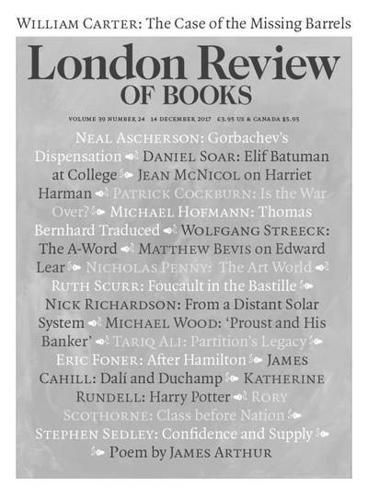
London Review of Books
by
London Review of Books
Published 14 Dec 2017
There are funny episodes and excursions – a showdown over her roommate’s snoring, a trip to Filene’s Basement to buy a ‘Gogolian’ overcoat, an argument about whether Euclid would or would not have been annoyed to find a place called Euclid Circle in 20th-century Boston that was neither a circle nor had anything to do with Euclid – but there are also discussions of the Sapir-Whorf hypothesis, the inferential tense in Turkish and the importance of the donkey in Spanish literature. These are the rather brilliant notes of someone who thinks for herself, unconstrained by other people’s dumb opinions. At some level, you wonder why they need to be in a novel at all – why they need to be cast as the speculations of a fictional character when they’re totally interesting in themselves – or indeed why Elif Batuman is spending her time writing novels when she’s so good at writing critically about difficult and theoretical things. The Sapir-Whorf hypothesis isn’t the half of it.
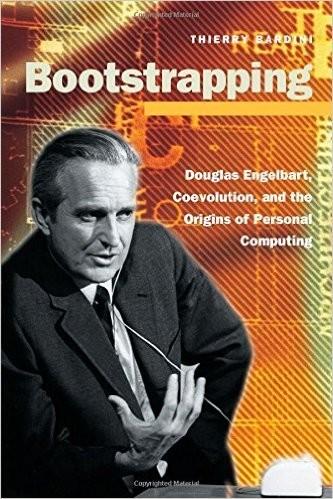
Bootstrapping: Douglas Engelbart, Coevolution, and the Origins of Personal Computing (Writing Science)
by
Thierry Bardini
Published 1 Dec 2000
In "Toward High-Performance Knowledge Workers" (En- gelbart 1982), the definition of "language" simply became "how we concep- tualize, attach labels and symbols, externalize, portray, model, communicate." As Engelbart himself pointed out, this understanding of what language is and does derives from the work of Benjamin Lee Whorf, and it both mirrors and extends the famous Sapir-Whorf Hypothesis: The Whorfian hypothesis states that "the world VIew of a culture is limited by the structure of the language which this culture uses." But there seems to be another factor to consider In the evolution of language and human reasoning ability. We offer the following hypothesIs, which is related to the Whorfian hypothesIs: Both the language used by a culture, and the capabilIty for effective intellectual actIv- ity, are directly affected during the evolution by the means by which indivIduals control the external manipulation of symbols.
…
Because of how he conceived of the way that natural language could function in the human-computer interface, Douglas Engelbart, along with Ted Nelson, often is credited for pioneering work in the field of hypertext or hypermedia. Many, however, trace the genealogy of hy- pertext not to Engelbart and his extension of the Sapir- Whorf Hypothesis, but to the work of Vannevar Bush. In a famous article called "As We May Think," Vannevar Bush, who had done some pioneer work in analog computing in the 1920'S and 1930'S while he was a professor at MIT, 2 proposed a new kind of electro-optical device, the Memex, "an enlarged intimate supplement of an individual's memory."
…
See also est Rosenbluth, Arturo, 25 Ross, Douglas, 86-87,128, 247n2 Rovner, Paul, 258n7 Rowell, H. V., 77 Royal typewnter, 162-63 Rubinoff, Morris, 16 Rulifson,Jeffrey, 121-22, 141,157, 161, 166, 187-93 passIm, 252n4, 254nI9,257nI5,258n7 Russell, Bertrand, 230 SAGE system, 29, 86, 247n4 Sapir, Edward, 240n3 Sapir- Whorf hypothesis, 3 6 - 37 Scaling effect, 119, 146, 223 Scantelburry, Roger, 184 Schneiderman, Benjamin, 225. See also under Interface: dIrect manIpulation Scientific Data Systems (SDS), 30, 125, 15 6 ,177, 25 In2 ,255 n 7, 25 6n 9; Model Sigma 7, 255 n 7, 25 6n 9 -Model 940 computer, 3°,125-27, 130, 14 8 ,155-5 6 , 18 9-9 0 , 19 2 , 253 n8 , 25 5 n 7.
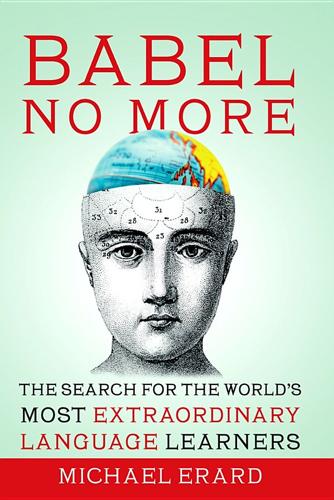
Babel No More: The Search for the World's Most Extraordinary Language Learners
by
Michael Erard
Published 10 Jan 2012
What people refer to as “thinking in a language” comes from being able to speak more immediately in a language without rehearsing it or translating it from a language one might know better; the spoken thought feels as if it’s closer to its source in the brain. Does speaking in a different language alter one’s perception? Can the structure of a language and the way its vocabulary maps meanings make the world more colorful, your friends more friendly, the trees wilder? The “linguistic relativity hypothesis,” or Sapir-Whorf hypothesis, as it’s alternately called, proposes that the language you speak actually molds your perception of the world. Quite literally, if two languages have a different range of color words, the person speaking both languages fluently will assign his perception of colors to two different names and perhaps categories.
…
., 79n Portuguese language, 4, 18, 30, 39, 43, 106, 119 positron emission tomography (PET), 157 Prasad, Chandrabhan, 201–2 pronunciation, 9, 11, 22, 36, 37, 40, 89, 158 perfect, 43 social, gender and geographic variations in, 45 Provençal language, 47n, 118, 119 psychosis, 49–50 Punjabi language, 47n, 194 Qing dynasty, 150 quadrilingualism, 190 Quakers, 59 Quechua language, 31, 42 Rain Man, 229 Real Academia Española, 208 recombination, 11 Reiterer, Susanne, 231–32, 234, 235, 292 Renaissance, 28 Renkema, Jan, 207 Respighi, Father, 32 Reuters, 106–7 Ricci, Matteo, 35 Rich, Katherine Russell, 86 Rigby, Christopher Palmer, 47n Rio de Janeiro, 10 Rochester, University of, 241 Romaic language, 43 Roman Catholic Church, 32, 33 baptism in, 59n books banned by, 59 confession in, 35–36, 37–38 conversion to, 59 evangelism and missionary work in, 137–38 excesses of, 46 feast days in, 137–38 Propaganda Fide of, 137–38, 261 Romance languages, 34, 44, 96, 115, 119, 120, 218, 254 Romanian language, 4, 104, 119, 255 Romani language, 35 Romanticism, 41, 46 Rome, 3, 4, 16, 33, 41, 57, 59, 137 Rosetta Stone, 239 Rugh, William, 45 Russell, Charles William, 41–44, 45–46, 48, 100, 137–38, 222, 267, 285, 294 Russia, 17 Russian language, 5, 8, 17, 23, 30, 35, 43, 74, 102, 109, 110, 124, 137 study of, 127–29, 251 Russian revolution, 17 Ruthenian language, 42, 153 RWTH Aachen University, 171 Saami language, 109 St. Patrick’s College, Maynooth, 41 St. Petersburg, 17, 74 Sakakibara, Yo, 86, 88 “Salamanic” language, 74 Samaritan language, 75, 76 Sanskrit language, 42, 47n, 77, 108, 119, 149, 194–97 Sapir-Whorf hypothesis, 49 Sardinian language, 38 Saudi-Arabia, 85n Sauerwein, Georg, 73–74, 172 schizophrenia, 214 Schrijfwijzer “Style Guide” (Renkema), 207 Schumann, John, 159–60, 237–38 science, 11, 14 empirical, 41 language, 13, 16 medical, 28 neurological, 15, 16, 41, 156–62, 170–75 polyglottery as, 92 Scoresby-Jackson, Robert, 172 Seashore, Carl, 163 Seashore Tests of Musical Ability, 163 self-confidence, 34, 46, 131 Semitic language family, 44 sentences, 18 bilingual, 51 construction of, 11, 22, 56, 82, 83, 96, 99, 142 “dummy subject,” 181n September 11th, 2001 terrorist attacks, 71 Serbian language, 43 Shakespeare, William, 194 Sharma, Arpan, 15 Shaw, George Bernard, 194–95 Shogun, 80 Sicily, 3 Siddhartha, 194–95, 201 Sidis, William James, 79, 282 sign language, 45, 279 Signs of the Savant, The: Language Against the Odds (Smith and Tsimpli), 97–99, 283 Sillmann, Peter, 170–71 Simon, Paul, 72 Sindhi language, 47n Singapore, 131, 208 Singer, Judy, 214 Sinhalese language, 42 Sino-Tibetan languages, 44n, 112 Skehan, Peter, 164, 227, 284, 287 Skype, 109 slavery, 3 Slavic languages, 44, 75, 153, 218, 252 East Slavic subgroup of, 17 sleep, 143 dreaming in, 48–49 rapid eye movement (REM), 48, 280 Smith, Neil, 94–99 Somali language, 47n Sorenson, Arthur, 189–90, 289 sound: mimicking of, 63, 71, 160 perception of, 33 production of, 33, 163 South America, 31 Southern California, University of, 101 Soviet Union, 129, 154–55, 251 Spain, 35 Spanish language, 4, 7, 10, 14, 30, 35, 43, 45, 49–50, 55, 82, 88, 118, 122, 192 Italian relation to, 18 study of, 9, 19–20, 102, 134 speech: defective, 95 loss of coherence in, 161 mimicking sounds of, 63, 71, 160 monitoring of, 24 organs of, 10, 11, 77 phonetic sounds of, 46 truthful, 45, 279 Spivak, Dimitri, 227 Sprachbund, 195–97, 208 Sprachegefühl, 263–64 Sproat, Richard, 234–35 Sri, 188–89, 192–94, 199, 204 Srinivasaraju, Sugata, 200, 201, 290 stammering, 5 Stanford University, 79 Starchevsky, A.
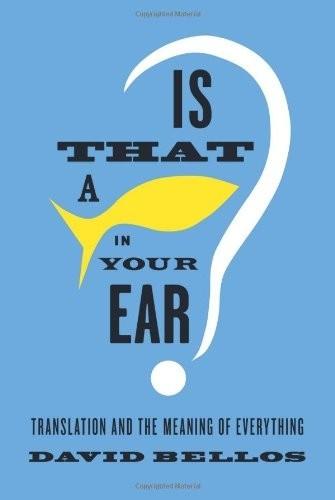
Is That a Fish in Your Ear?: Translation and the Meaning of Everything
by
David Bellos
Published 10 Oct 2011
The question for translation (and for anthropology) is this: Can we jump the grooves and move more or less satisfactorily from one “habitual pattern” to another? The view that you can’t ever really do this has become known as the Sapir-Whorf hypothesis, despite the fact that Edward Sapir never subscribed to the idea. The trouble with the simple form of this misnamed prejudice—that translation is impossible between any two languages because each language constructs a radically different mental world—is that if it were true you would not be able to know it. The parable of the NASA captain’s report of an alien language, given here, is one way to show how flawed the Sapir-Whorf hypothesis really is. A more sophisticated version of the same line of thinking runs up against equally powerful blocks.
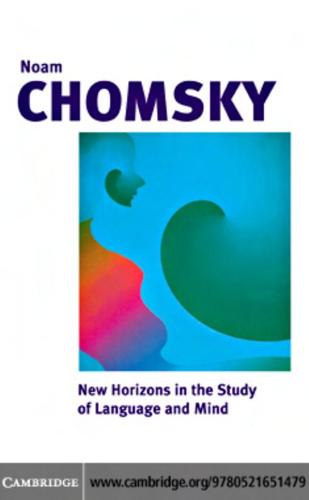
New Horizons in the Study of Language and Mind
by
Noam Chomsky
Published 4 Dec 2003
But I’m not aware of having beliefs that correspond literally to the animistic and intentional terminology I freely use, or that conflict with anything I understand 136 New horizons in the study of language and mind about relativity and the motions of molecules. Nor does the world, or my mental universe, seem to me to be populated by anything like what I describe as things that concern me. Psychologists and anthropologists exploring language–thought relations (for example, the Sapir–Whorf hypothesis) find such problems hard and challenging; ready answers are offered in much of the contemporary philosophical literature, but on grounds that seem to me less than persuasive. In fact, radically different answers are offered. Take language as an example. Donald Davidson writes that “we all talk so freely about language, or languages, that we tend to forget that there are no such things in the world; there are only people and their various written and acoustical products.
…
Minneapolis, MN, University of Minnesota Press. 214 Index Index abduction 80 ability, distinguished from knowledge 50–2, 97–8 abstract see concrete–abstract dimension access: to consciousness 93–8, 141, 147 – in principle 96–8, 141, 143 acoustic phonetics 174 acquisition 6–8, 181; and concept formation 61–6; “initial state” as a device for 4–5; innateness and selectivity x–xi, 121–2; labelling of innate concepts 61–2, 65; and lexical access 121–2; and sensory deficit 121–2; see also child language acquisition; Language Acquisition Device (LAD) adjacency 11, 121 agency, and objects 21–2 agreement 14 algorithms 113, 147, 159 Almog, Joseph 42 analytic–synthetic distinction xiv, 46–7, 61–5 anaphora 39, 140 animal, man and 3 animate–inanimate dimension 126 anthropological linguistics 6 anthropology 136 anti-foundationalism 76–7 arbitrariness, Saussurean 27, 120 argument-structure 11 Aristotle 187, 204n articulatory phonetics 174 articulatory–perceptual systems 28, 120, 123–6, 180 214 artifacts, capacities of 114 Artificial Intelligence 200n assertability conditions 109 assignment of derived constituent structure 199n association 92, 93 Atlas, Jay 151 “atomic” units 10 atomism, physical 111 auditory cortex 158 Austin, John 45, 132 authority: deference to 155; firstperson 142–3 autosegmental 40 Baker, Lynne Rudder 153–4 Baldwin, T.R. 79–80, 81, 144 Barinaga, Marcia 158 Bedeutung (Frege) 130, 131–2 Beekman, Isaac 110 behavior, causation of 72, 95 behaviorism 46–60, 80, 92, 93, 101, 103 belief systems: and the language faculty xiv, 63–4, 129; lexicon and 32; and the terms of language 21–2, 137, 148–9 beliefs: absence of term in other languages than English 119; attribution of 91, 119, 135, 146–7, 153–4, 200n; convictions about the nature, as a posteriori or a priori 89; different about the same subject 149, 192–3; false 33, 43; fixation 63–4; individuation of 165, see also I-beliefs justification Index as interest-relative 196n; and meaning 137; and properties of expressions 178–9; relation to the world 47, 135, 197n; similarity of 43–4, 152; social role of 197n; that correspond literally to animistic and intentional terminology 135–6 Berthelot, M. 111 “best theory” 112, 136, 142, 145, 173 “bifurcation thesis” xiv Bilgrami, Akeel 137, 150, 154–5, 190 binding theory 10, 11, 31, 39, 50; use of principle (C) 93, 99 biology vii, 1–2, 3–6, 139; of language 1–2, 3–5, 34; meaninglessness of intuitive categories for 161–3; and study of the mind 5–6 Black, Joseph 166, 184 blindsight 95–7 body: Cartesian theory of viii, 103; limitations of naturalistic theory of the 28, 143; as mental and physical 113, 167; theory of the 84, 86, 87, 199n body–mind problem see mind–body problem Bohr, Niels 43, 111, 151, 152 Boltzmann, Ludwig 110 boundary conditions 7–8 Boyle, Robert 108 Bradley, David 163, 203n brain: auditory, visual and tactual inputs 121–2; biochemical laws of 16; configurations relevant to meaning 19–20, 24–40; and consciousness 86, 145; electrical activity of the viii, 116–17, 140; homogenity of structure not found 184; language faculty xii, 73, 77–8 – computational theories 116–17; localization of analytic mechanisms of 121–2; properties of 27; shared initial state 5, 33–4, 73 – mental and organical structure of the 215 167–8; and mind 76; neural structure as natural realization of rule systems 54–5; provides mechanisms of thought 113–15, 183; scans 171; as solving problems and adapted to normal situations 159, 161; study at various levels 6, 24, 103; as thermoregulator 195n; things mental as emergent properties of 1–2; in a vat 158–9 brain sciences x, 19–20, 116 Brentano, Franz 22 Brock, William 110–11 Bromberger, Sylvain 82, 203n Burge, Tyler 72, 159, 171, 184, 192–3, 195n, 202n, 204n; on eliminativism 88, 92, 138; on naturalism 87, 109, 144 c-command 11, 40 C–R theories 24, 25–7, 40, 45, 104–5; as a form of syntax 34, 40; see also I-language Carnap, Rudolf 186, 187 Cartesianism 80, 83–4, 85, 132, 145, 167; collapse of 103, 108–9 case systems, language differences in 11–12 Case theory 10 categories 138–9 causality viii, 47, 72, 95, 137 “causative” properties 179 cellular theories 116 chain condition 10 Chastain, Charles 115 child language acquisition x–xi, 6–7, 101, 186; assigning labels to concepts 61–2, 65; compared with foreign adult’s 49; and the computational system 120; early exposure and language development 201n; and the LAD 92–3; limited exposure to semantic aspects in ambiguous circumstances 120, 185; rate of 120; of a specific language 53, 54 216 Index children: attribute beliefs to others before development of language 119; blind and language acquisition 121–2; innateness of the property of discrete infinity 3–4; intuitive understanding of concepts 62; phonetic data available to 185; usage differs from adult usage 191–2 Churchland, Patricia 107, 115 Churchland, Paul 64, 107, 115, 183, 184 clicks, displacement to phrase boundaries 25, 55, 58, 140, 201n cognition: internally generated modes to which experience conforms 182–3; knowledge of language and x, 73, 134 cognitive deficits, with intact language faculty 121, 146 cognitive development: and language growth 62; uniformity not found 184 cognitive reach 107 cognitive revolution (1950s) vi, 5–6 cognitive science 23, 33, 112, 116, 165; status of 165–6 cognitive state 55, 81, 82–3, 154 cognitive system 117–19, 125; and complex relational words 128–9; phonetic aspects of 118; and semantic representation 174; state changes that reflect experience 118–19; use of resources 129, 135 “cognoscitive powers”, innate 181–3 “coherent–abstraction test” (Almog) 42 common language approach 29–32, 33, 37, 99–100; see also “public language” common sense xvi, 80, 135, 138, 146, 163–4; and naturalistic inquiry 20–4, 37–45 communication 30, 78, 130, 154, 164, 202n community norms 40, 49, 71, 72, 142, 148, 155 competence: assumptions about drawn only from behavior 57–8; as a generative procedure 60; grammatical 26; pragmatic 26; see also I-language “competing hypothesis” 183–4, 185 complexity xii, 7, 13, 124, 169 computational approach to language xiii, 6, 10, 103–4, 116–17, 124, 159 computational procedure: “austerity” of 120–1; maps array of lexical choices into phonetic and logical form 125, 170; registers adjacency, but no “counters” 121 computational systems: complexity of 123–4; (generative) 78–9; with largely invariant principles 120, 169; properties 107, 120–1, 123, 145 computational–representational systems see C–R theories concepts: construction of artificial 51–2; as determining reference of a word 187; innate labelled in language acquisition 61–6; link with sound 120; locational 62; Putnam on short theories and formation of 66; use in understanding ordinary life 90 conceptual–intentional systems 9, 10, 28, 61–6, 124–6, 180 concrete–abstract dimension 126, 180–1 concreteness 168–9, 176 conditions, philosophically necessary 146–7 “Connection Principle” (CP), Searle’s 96–8 connectionism 103–4, 116 consciousness xiv, 83, 108, 145; “access in principle” to 96–8, 141, 142, 143; access to 93–8, 141, 147, 169; nature of 115, 143, 145; potential 86–7, 91–2, 93, 97; potential for, and blindsight 96–8; relation to neural structures 144–5; Searle’s “radical thesis” 86–7 Index constitution/constituency 189–90, 191 content: of fixed reference in natural language 42; locality of (Bilgrami) 150, 190; phonetic 151; as a technical notion 137, 153; wide and narrow 165, 170; see also perceptual content coordinate structure constraint, Quine on 55–6, 198n Cordemoy, Géraud de 114 covert movement 14–15 creativity, of language use 16–18, 145 cultural studies 157–8 D (domain) 39–40 Darwin, Charles, Origin of Species 163 Davidson, Donald 46, 61, 136; “A Nice Derangement of Epitaphs” 56, 67–70; “anomalism of the mental” 88–9; “interpreter” example 29–30, 56, 67–70, 102; “no such thing as language” 136, 202n Davies, Martin 23, 195n deep and surface structure x, xvi, 10, 28, 203n deference, patterns of 171 Dennett, Daniel 79, 91, 107–8, 144, 200n denotation, use of term 130 denotational theories of interpretation 131, 136, 177–9, 192 Descartes, René ix, xiii, 3, 17, 108, 112, 114, 133, 182 description xi, 145 descriptive adequacy 7–8, 120, 122, 165, 185 descriptive linguistics 54, 122, 184 descriptive semantics 47, 61 design of language 9–13 designer’s intent 125, 136–7, 180 deviance viii, 78–9; and computational theories of the language faculty of the brain 116–17; distinctive brain responses 217 to language 24; from community norms 98–9, 142 Dewey, John 47 dialect: as a nonlinguistic notion 31; prestige 156 dictionary, compared to complexity of human lexical recording 120, 185 Diderot, Denis 110 Dijksterhuis, E.J. 108 discourse representation 129 discrete infinity 3–4, 184 displacement property: explained 12–14; and legibility conditions 13–15 dissociations 117, 184 distal properties, correlation of internal processes with 162 distributional properties 179 division of linguistic labor 71, 187–8 du Marsais 196n dualism vii, xiv, 75–105, 117, 140, 142, 163; varieties of 98–105; see also Cartesianism; metaphysical dualism; methodological dualism Dummett, Michael xiii, 46, 56, 57, 102, 143; on LAD 94; on language as a social practice 48–9, 50; on naturalistic inquiry as psychological not philosophical 140–1 Dupoux, E. 118 economy conditions 123–4 Edelman, Gerald 103–4, 116 Egan, Frances 162 electrophysiological responses, to syntactic versus semantic violations 116–17 eliminativism see materialism, eliminative embedding, multiple 124 “emergent laws” 145 empirical inquiry 46–74, 76, 92–3 empty category 15, 181 English: importance of Japanese for the study of xv, 53–4, 58, 102; left-headed 93 218 Index entailment relation 34, 174 entities, beliefs about 135 environment: influence on initial state of language faculty 78, 162, 166, 189–90; role in specification of reference 41 epistemic boundedness, Dennett on 107–8 epistemic naturalism 79, 80–1 epistemology: evolutionary 80; naturalized (Quine) 46–7, 80, 81 Epstein, Samuel 11 error, problems of 142, 143 ethnoscience xv, 90–1, 135, 155, 160, 164, 165, 172–3 event-related potentials (ERPs) viii, 24–6, 38 evidence: intuitive categories as 162; legitimacy of wide use of x, 53–8, 60, 102, 139–40; linguistic 55, 57, 58, 139–40, 201n; psychological 55, 57, 58, 201n; role of initial state in determining what counts as 197n; useful about reference 171–2 evolution: of brain’s administration of linguistic categories 183; and innate concepts argument 65–6; and questions for empirical inquiry 73–4; theory of 139, 163 experience: effect on state changes of the cognitive system 118–19; and “initial state” 4–5, 7–8; sets boundary conditions 7–8 experts: deference to 155–6; role in determining reference of terms 41–2, 71, 72, 190–2, 196n explanation, and description xi explanatory adequacy 7–8, 45 explanatory models 19, 45, 183–4 explanatory theory 103, 106, 110, 115, 166; and intuitive judgements 171–2 expression, ways of thinking and means of 15–16 expressions: class generated by Ilanguage 78–9, 169; computational procedures that access the lexicon to form 170, 173–4, 180; internally-determined properties of 34–6; as a pair <PHON, SEM> 173, 175; relation with external world 129–30; structural problems for interpretation 124; universal and language-specific properties 35 extension 148 extensional equivalence (Quine) 132 externalist approaches xiii, 38–40, 43, 148–63, 190; and Twin-Earth thought experiments 148–50, 155 fact, truths of and truths of meaning 62–4 faculty of language vii, x–xi, xiii, 77–8, 168–73; assumes states that interact with other systems 168; “austerity” of 120–1; common to the species 70, 168; components of 117; evolution of 2, 3–5; as a function that maps evidence into I-language 73; innate structure and effect of external environment 60, 168; intact but cognitive deficits 121, 146; intrinsic properties of 121, 127; as natural object 119; perfection of 9–15; relations with mind/brain systems xii, 73, 77–8; specific structures and principles of 183–4; triggering of the analytic mechanisms 121–2; see also initial state; state L fallibility 191 features 10, 120, 179; attraction of 13–15; legibility conditions and 11–12; not interpreted at either phonetic or semantic interface 12 field linguist 46–60 first-person authority 142–3 “fitting”, and “guiding” (Quine) 94–5 Flaubert, Gustave 90 Fodor, Jerry 107, 117, 139, 184; “First Law of the Non-Existence of Cognitive Science” 165; “language of thought” 19 Index folk psychology 23, 28, 89, 154–5, 196–7n folk science xv, 84, 91, 127, 135, 137, 164, 172–3; and cultural conditions 119 folk semantics 172, 188 forces, immaterial 108–9, 144, 167 formal languages 12, 57, 199n, 202n free will ix, 108 Frege, Gottlob 30, 36, 80, 85, 130, 187, 188; “common public language” 30, 33, 131–2 Friedman, Michael 112 front-wh-phrase 56, 198n Galileo Galilei xiii, 4 “garden-path sentences” 124 generalizations, psychological 165–6, 168–9 generative faculty of human understanding 16–18 generative grammar vi, 132, 174; computational operations 13; explained 5–7; goals of study of mechanisms in everyday life 17; and grammaticality 63; and principles-and-parameters approach 122 generative phonology 44, 151 generative procedure; isolating a 29–32, 69; the right 132 genes, and “initial state” 4–5 Gestalt 182 Gibson, Roger 198n Goodman, Nelson 181 government 11 grammar: and descriptive adequacy 7, 120, 185; uses of term 5, 201n grammars: “innate skeletal” (Quine) 199n; as specific internalized rule systems 57–61 grammaticality, Quine on 63, 199n gravity, Newton’s 108–9, 166 “guiding”, and “fitting” (Quine) 94–5 Haas, W. 199n Halle, Morris 203n 219 Harris, James 64 Heisenberg, Werner 167 Herbert, Edward, Baron of Cherbury 80, 85 Higginbotham, James 73 Hobbes, Thomas, on names 182 holism 46, 48, see also meaning holism homonymy 181 Huarte, Juan 17 human being: concept of xv, 3, 20, 139; and language speaking 20–4 human faculty of language see faculty of language Humboldt, Wilhelm von 6, 73 Hume, David 4, 64, 80, 85, 133, 170; on fictitious ascribed identity 16, 182–3; on Newton 110, 167; “science of human nature” 141, 164, 173 Huygens, Christiaan 82, 108 hypotheses, Newton’s refusal of 109 I-beliefs xiii, 32–3, 193; changes in 193; expressed in I-language 72 I-conceptual system 193 I-language vii, ix, xi–xii, xiii, 123; as generative procedure 70–3, 78, 119–21, 203n; C-R theory of 26, 32, 38, 40–2, 78; and construction of semantic and phonetic representations 174; followed by principles-and-parameters approach 123; has computational procedure and a lexicon 120–1; as instantiation of the initial state 123; internal and individual and intensional 5, 70–3, 118–19, 132, 169; language-like accretions 42–3; and language-world relations 188–9; mastery and internal representation of a specific 73; normativity aspects of 99; and performance systems 27–32, 34–6; as a product of the language faculty 27, 42–3; relation to external events 174–5; restricted variety of 27, 33, 44–5; specifies 220 Index form and meaning and accounts for properties of complex expressions 26–7; use of term 131, 201n I-linguistics 171; and common-sense notions of language 169, 170, 173, 192–3; and use of properties which might include I-sound and I-meaning 187 I-meaning 170, 173, 175, 179 I-sound 170, 173, 175, 179 idealization 49–50, 100, 123, 197n ideas: history of xiv; as not things but ways of knowing 182; people have about meaning and sound 173; theory of 182 identity, ascription of fictitious (Hume) 16, 182–3 idiolect, communication between time slices of an 30 immunology, selective theory xi, 65 impairment, selective 117 indeterminacy, empirical 57–8, 198n indeterminacy of translation (Quine) 132, 140, 147, 198n indexicals 42, 181 “individual sense” 70, 72 individualist approach vii, 32, 162, 164;, see also internalist approach individuation: and nameable things 126–7; and referential use of language 180, 182–3 infants: with performance systems specialized for language 118; reification of bodies in 92–3 inference 121, 180; as interestrelative 196n inflection: as special property of human language 12; variations in richness 120 inflectional features, role in computation 10 inflectional systems: basically the same 120; language differences in 11–12 initial state x–xi, 4–5, 77–8, 123; and attained state 95; common to the species 4–5, 50, 53–4, 119; determines the computational system of language 27; as a fixed biologically-determined function that maps evidence 53–4; genetically determined 27, 53–4, 118; incorporates general principles of language structure 60; incorporates principles of referential dependence 50; integrated conceptual scheme 62; with parameters fixed 123; plus course of experience 4–5, 7–8; and postulated identity of all languages 122; richness of the 35–6; as shared structure 30, 33–4, 50; as Universal Grammar (UG) 73, 81, 101; see also I-language innate component, identifying the 172 innate endowment: and environmental factors 166; and impoverished input 121–2; role in understanding the world 90–1 innate semantic representations, theory of (TISR), Putnam’s critique of 184–9 innate structure of the organism, theory of and the mapping M 60–1 innateness, of knowledge of language x–xi, xiii, xv, 2, 3–4, 126 “innateness hypothesis”, Putnam on Chomsky’s 65, 66–7, 100–1, 187–9 “innatism” see “innateness hypothesis” inner states, ideas about 164–6, 168–9 input–output systems, of the language faculty 117–18 instinct 91 institutional role 180 intelligence 6, 122, 182; accessibility to human ix, 91; and language use 147; mechanisms of general 185; scope and limits of 107; see also Artificial Intelligence Index intelligibility, in scientific discourse 151–2 intention 62, 91, 125, 137, 180; referential 130–1; see also conceptual–intentional systems “intentional laws” 166 intentional terminology 113–15 intentionality: Brentano on 22; naturalistic inquiry and 45, 132 interests 125, 128, 137 interface: between language faculty and other systems of the mind 123; legibility conditions at the 10–12; levels 10, 28, 39, 173–5; location of the 174; phonetic and semantic representations at the 10–12, 160, 173–4; properties 124–6; weakest assumptions about relations 10, 128–9 interface condition, requires erasure of uninterpretable features 14–15 internal processes, correlation with distal properties 162 internal relational structure 22 internalism vii, xiv, xv, 15, 125; critique of 162; defined 134; form of syntax 129 internalism–externalism issues 148–63 internalist approach 33–4, 38–45, 134–63, 164–94; legitimacy of inquiries that go beyond 156; and other domains of psychology 158–9; to differing beliefs 193; to language-world relations 15–16 internalist linguistic theory (T) 142–3, 146 internalist semantics 34, 38–9, 45 interpretation, language and xiii–xiv, 46–74 interpretations, assignment of 160–1 “interpreter”, Davidson on the 29, 56, 67–70, 102 intuitions 44, 70, 84, 119, 130, 135, 138, 161, 197n intuitions: limits of xiv–xv; as subject of linguistic study 171–2; and technical terms 148–9 221 intuitive categories, meaninglessness for science 161–3 intuitive judgements: about statements 40–2; as data to be studied as evidence 171–2; different 64; forced with ordinary expectations withdrawn 172 invented forms 181 invented system, designed to violate principles of language 121 Jacob, François 139 Jacob, Margaret 108, 110 Jakobson, Roman 140 James, Henry 47, 90 Japanese: anaphora in 140; evidence from about referential dependence 53–4, 58, 102; importance for study of English xv, 53–4, 58, 102; right-headed 93 Jerne, Niels Kaj 65 Jespersen, Otto 73 K, as constant knowledge of language 51 K-ability 51 Kant, Immanuel 112, 182; method of transcendental argument 165 Kayne, Richard 123, 131 Kekulé von Stradonitz, August 111 Kenny, Anthony 50, 197n knowing-how 51–2 knowledge: distinguished from ability 50–2, 97–8; nature of 170; nature of tacit xiii knowledge of language vii, ix, xiv, 50–2; and cognition x, 73; defined 73; in English usage 170; as the internal representation of generative procedure in the brain 50–2; as learned ability 50; partial 48–9, 99–100, 146; uniform among languages 126; see also innateness Kripke, Saul 37, 141–2; Naming and Necessity 41 Kripke’s puzzle 191 222 Index La Mettrie, J.O. de 84, 113, 167 labels, assigning to concepts 61–2, 65 Lange, Friedrich 167 language: as a biological object vii; as a community property 99–100; elementary properties 6; as the finite means for infinite use (Humboldt) 6, 73; as a generative procedure assigning structural descriptions 50–2; internalist perspective on 134–63; and interpretation 46–74; as a natural object xiv, 106–33; naturalism and dualism in the study of 75–105; in naturalistic inquiry 77–9; no useful general sense in which to characterize 48–9; as a notion of structure that guides the speaker in forming free expressions 73; notions of in ethnoscience 90–1; as a portable interpreting machine 29, 68, 202n; as a process of generation 73; as property of organized matter 115; as a social fact 197n; specific properties of human 16; study of 3–18; terms for something like 119; use of term 106, 130–1 – in different speech communities 157–8 – views on the concept of 73 Language Acquisition Device (LAD) 81, 86, 92–3; as a physical not psychological mechanism 93–4 language change, the study of 6 language faculty see faculty of language language speaking, and human being 20–4 language use see use of language language-external systems 175, 179 language–thought relations 135–6 language–world relations: at the phonetic interface 175; internalist approach 15–16, 129–30; truth of 188–9 languages: apparent variability of 122; as cultural artifacts 157; diversity of 7; head-first or head-last xi; no such things as (Davidson) 136; in part unusable 124, 161 Lavoisier, Antoine 110 learnability of languages xiv, 124 learning: as acquiring rules that map LI into some other system of mind 176; “by forgetting” 118; generalized mechanisms 66, 101; incremental 30; selective process 65 left–right orientation 93 legibility conditions xii, 9–11; and the displacement property 13–15; impose three-way division among features 11–12 legitimacy, questions of 183–94 Leibniz, Gottfried Wilhelm 82, 108 Leonardo da Vinci 163 levels of analysis (Marr) 118, 159 Lewis, David 57 Lewis, G.N. 111, 112 Lewontin, Richard 161, 195n lexical items 10, 175–83; acquired on a single exposure 120, 185; attribution of semantic structure to 61–2; constituted by properties approach 120, 170, 179; different approaches to study of 36, 175–83; dissociation of either sound or meaning 175, 176–7; may be decomposed and reconstructed in the course of computation of SEM 175; relational approach to 179–83 “lexical semantics” 174 lexical structure 181; generative factors of (Moravcsik) 182–3, 204n lexicon: defined 10; mental 32; and properties of computation 123, 170; subject to a complex degree of conscious choice 170–1; things selected and individuated by properties of 137 LF see Logical Form Index lingua mentis, representations generated by I-language map into 185–9 linguistic, use of term 106, 134 linguistics: explanatory insight for vii; and science-forming faculty (SFF) 101; scientific status of xiv, 112; subject matter of 1–2, 139–40 linguosemantics 165 Llinás, Rodolfo 128 Locke, John 1, 167, 182–3 locomotion 147 locust–cricket example (Baker) 153–4 Logical Form (LF) xi–xii, 124–5, 129–30; instructions at the interface 128–9; origins of 28 “m-events” (events mentalistically described) 89–90 McGinn, Colin 145, 201n machine: ability to think debate 44–5, 114, 147; man and 3, 17, 84, 132 machine intelligence 114 malapropisms 70–3 mapping, and neural interaction 116 marked options 125 Marr, David 23, 118, 158–9, 161, 195n, 202n material: and abstract factors, simultaneity in meaning 16; or physical 91–2, 143 materialism 109–10, 144, 167; eliminative 26, 85, 87, 88, 90, 91, 92–3, 104, 117, 138, 144; and its critics 85–93; Nagel on 87–8 matter: altered concept of 113, 133; dark 85; thought and action as properties of organized 84, 86 meaning: analogies with sound 15–16, 175–9; and beliefs 137; disagreements about study of 15–16; “in the head” or externally determined 148–51; inquiry into meaning of 2, 173; internal conditions on 36; relevance of mental/brain configurations to 223 19–20, 24–38; as semantic features of an expression 125; and sound xi–xii, 9–10; theory of, and internalism–externalism debate 147–63; truths of and truths of fact 62–4 meaning holism xiv, 61, 66–7, 152, 186–7, 195n mechanical philosophy 83–4, 86, 104, 108, 110, 144, 163, 167 mechanics, laws of 82 mechanisms 17–18, 56 Mehler, J. 118 mental: all phenomena potentially conscious 86–7; “anomalism of the” (Davidson) 88–9; bridge laws relating to physical 89–90; characterized as access to consciousness 93–8; location within the physical 103; as the neurophysical at a higher level 104; phenomena described in terms of the physical 109; and physical 113; and physical reality 166–8; replacement by physical 138; to define in neurological terms 103; use of term xiv, 75–6, 106, 134 mental construct vii mental event tokens, and physical event tokens 89 mental properties: approaches to 147; and nervous system 167 mental representations: internalist study of 125; specifications of 165; see also C–R theories mental states, attribution of 91, 160–1, 169 Mentalese 176–8, 185–9 Merge operation 13 messages, decoding 185–9 metaphorical use of terms 114, 131, 159, 161 metaphysical, extracting from definitions 75–7 metaphysical dualism 108, 112, 163 metaphysical naturalism 79, 81–2, 85, 144 224 Index metaphysics vi, 112 methodological dualism 76, 77, 93, 112, 135, 140–1, 163 methodological naturalism 76, 77–8, 79, 81, 91, 135, 143 Mill, John Stuart 187 mind: architecture of the 14, 121, 135, 174;Cartesian theory of 83–4; as a computational state of the brain 128; as consciousness 86–7; as “Cryptographer” 185–9; explanatory theories of in study of language 77; history of the philosophy of 109; as mental aspects of the world 134; naturalism and dualism in the study of 75–105; naturalistic inquiry into 103; reflection on the nature of the 165; as res cogitans 83; study of in biological terms 6; theory of (TM), scientific status of 85–6; unraveling the anatomy of the 173, 183; use of term 75–6, 106, 130–1 mind–body problem vi, vii–viii, xiv, 84, 86–91, 88–9; as how consciousness relates to neural structures 144–5; lacks concept of matter or body or the physical 110, 199n; Nagel on 86–8; no intelligible 103, 112, 138; as a unification problem 108–9 mind/brain interaction 1–2, 9–11 mind/brain systems: integration of states of language faculty with 173–5; internalist study of 164–5 Minimalist Program x, xi, xv, 9–15 misperception 159–60 misuse of language, notion of 49, 70–3, 200n “MIT mentalism”, Putnam’s critque of 184–9 models: computer 105, 116, 157; constructing to learn 114 modifications, nonadaptive 163 modularity: of mental architecture 121; use of term 117–18 Moravcsik, Julius 128, 182–3, 204n motion: inherent in matter 167; studies using tachistoscopic presentations 159 motivation 162 motor systems 17–18 Move operation 13 movement xii, 13, 14–15 multilinguality 169 mutations 96–7 mysteries ix, 83, 107, 133 Nagel, Thomas 86–8, 90, 95–6; Language Acquisition Device (LAD) 92–4;on mind–body problem 86–8, 109, 115; on naturalistic theory of language 143 names: have no meaning 24, 42, 173, 181; Hobbes on 182 naming, as a kind of world-making 21, 127, 181 national languages, as codifications of usages 100 natural kinds xv, 19, 20–2, 89, 105, 137, 204n natural language: apparent imperfections of xii, 9–15, 123–4; properties of terms of 126–7; sometimes unparseable 108; and use of technical terms 130–2 natural object 117, 119; language as a 106–33 natural sciences vii, 135; defining 81–5, 92; as “first philosophy” 112; and knowledge of language 51; and notions of belief and desire 146; and psychic continuity of human beings 139; Quine’s definition 144; standard methods of 52–6 natural selection: replaced God 110; unselected functions in 163 “natural-language semantics” 174, 175 naturalism vii, xiii, xiv, xv, 109; Baldwin on 79–80; in the study of language and mind xiv, 75–105; use of term 76–7, 135; varieties of 79–85; see also epistemic Index naturalism; metaphysical naturalism; methodological naturalism naturalistic approach 1–2, 103, 106; compared with an internalist approach 134, 156 naturalistic inquiry; and commonsense perspectives 37–45, 85; defined 115, 134; detailed 117–33; divergence from natural language 23–4; and intentionality 45, 132; language in 77–9; as “Markovian” 196n; nature of 76–9, 82–5; as psychological not philosophical 140; scope of 19–24, 28–9, 90, 97; symbolic systems of 153 “naturalistic thesis”, Quine on 92–3, 144 nature, belief as unknowable 110 negation 124 nervous system 103–4, 116; and mental properties 167 neural net theories 103–4, 107 neural structures, relation of consciousness to 144–5 neurophysiology 25–6, 103, 104, 116 Newton, Isaac viii, 80, 83–4, 86, 93, 141, 163, 167; anti-materialism 1, 82, 84, 108–10, 144, 199n; on gravitation 108–9, 166 norms 49, 72, 148, 157, 171–2; violation of 98 numbers 121 object constancy 94, 97, 135 objectivity premise 159 objects: and agency 21–2; discontinuous 127; nameable 136–7; problems posed by artifacts compared with natural 105 observation, of linguistic aligned with non-linguistic behavior 46, 52 “observational adequacy” 198n “occult qualities” 83–4 ontology 184 optimality conditions xii, 10–11, 123, 125 ordinary English usage, Pateman’s description 169 225 ordinary language: accounts of mental and physical events 89–90; philosophy 46, 203n; use and terminology 141–2, 169 organic unity, and personal identity 182 organism: analogy 4, 17–18, 59–60; constraints on computing a cognitive function 162–3; dedicated to the use and interpretation of language 168; internal states of an 134; “solving problems” 159, 161 organization, “from within” 182 “p-events” (events physicalistically described) 89–90 “p-predicament” (Bromberger) 82 parameters see Principles and Parameters approach “parser” 69–70, 200n parsing 107–8, 124 Pateman, T. 169, 197n Pauling, Linus 106, 111 Peirce, Charles Sanders 80, 83 perception 2, 124–6; and the computational system 120, 180; as a dream modulated by sensory input 128; empiricial theories of 161–2; language-related differences in 118; veridical 23; see also articulatory–perceptual systems perceptual content 23, 196n perceptual organization, reduction to 183–4, 185 perfectness of language xii, xvi, 9–15, 123–4 performance: competence and ix; and computation theories 124 performance systems 45, 117, 118; fallibility of xiv, 124; and I-language 27–32, 143; I-languages embedded in 34–6; internal representations accessed by 160; specialized for language 118; use of expressions generated by I-language 124–6; see also articulatory–perceptual systems; conceptual–intentional systems 226 Index perspectives 40, 88, 150, 151–6, 180; conflicting for words 126; linguistic agent’s 137; range of 36–7; see also point of view PF see Phonetic Form philosophical explanation 142, 147; science and 140–1 philosophy vi, 46–74; causality and core problems of 145; naturalization of 144; and science 81–2, 87, 94, 140–1 philosophy of language xiii, 16–17, 46, 61 relations between expressions and things 129–30 PHON(E) 173, 175, 177, 180, 203n phonetic aspects, abundance of variety 185 phonetic features 12, 15–16, 44, 125; accessed by articulatory– perceptual systems 123, 180 Phonetic Form (PF) xi–xii, 28, 124–5, 129 phonetic level 11, 173 phonetic realization, different of inflectional systems 11 phonetic relations 179 phonetic representations 9, 10, 174, 185–9 phonetic value 129, 177 phonetics 174 phonological features 170, 192 phonological levels, in terms of intention 203n phonological units 43–4, 151–2 phonology 43–4, 147 phrase boundaries: and perceptual displacement of clicks 25, 55, 58, 140, 201n; and referential dependence in Japanese 53–4, 58 phrase-structure rules 10, 13, 53–4, 58 physical: anomalism of the 138; mechanical concept of 167; and mental reality 166–8 physicalism 117, 144 physics xv, 82, 84, 87–8, 112; development to permit of unification 166–7 Platonism 80 “Plato’s problem” 61 Poincaré, Jules 110 point of view 40, 164, 182; nameable objects and 136–7; and status of things 126–8; see also perspectives Popkin, Richard 57, 76–7 Port Royal Grammar 4 power and status issues 156 pragmatic competence, limited, and language faculty 146 pragmatics 132 pragmatism 46–7 Priestley, Joseph 84, 112–13, 115, 116, 167 priming effects 140 “primitive theory” 90 principles 138–9, 184, 192; fixed and innate 122; and underlying structures 168–9 Principles and Parameters approach x, xi, 11; explained 8–9, 121–3; see also Minimalist Program “prior theory” 67–70 problems, ix, 83, 107, 115 production 2 projection principle 10 pronominalization, “backwards” 196n pronouns 181; anaphoric properties of 39; dependency of reference 126 proper names, no logical (Strawson) 24, 181 properties: partial account of language 184; of sensation or perception and thought 113 propositional attitudes, attribution of 192–3 Proust, Marcel 90 psycholinguistic experiment 171 psychological evidence 139–40 psychological generalizations 165–6, 168–9 “psychological hypotheses” 140–1 Index psychological mechanisms 117–18 psychology: internalist 143; invented technical term 153; and software problems 105 psychology vi, vii, 1, 80, 136, 138, 154, 160, 181, 202n psychosemantics 165 “public language” 30, 32–3, 37, 38, 40, 127, 131–2, 136, 148, 155–8, 187–8 purposes 136–7 Pustejovsky, James 128 Putnam, Hilary xiii, 19, 41, 152, 156–7; on alleged facts 136; on Bohr 43; Chomsky’s critique of 19–45; critique of “MIT mentalism” 184–9; division of linguistic labor 71, 187–8; on impossibility of explanatory models for human beings 19–20; on intentionality 45; on languages and meanings as cultural realities 157–8; rejection of the “innateness hypothesis” 65, 66–7; “The Meaning of Meaning” 41–2; Twin-Earth thought experiment 40–1, 148–9, 155; on water 127–8 quantifiers 11, 124 quantum theory 111 Quine, Willard xiii, 46, 57, 61, 101, 141; coordinate structure constraint 55–6; displacement of clicks study 55, 58, 140; distinction between “fitting” and “guiding” 94–5; epistemology naturalized 46–7, 80, 81; on extensional equivalence 132; on grammaticality 63; indeterminacy of translation 132, 140, 147; “naturalistic thesis” 92–3, 144; no fact of the matter 58, 59; radical translation paradigm 52–5, 101–2; “revision can strike anywhere” 66–7, 188 R (“refer”) relation 38–40; and Rlike relation 41–2 227 rational inquiry, idealization to selected domains 49–50 reduction viii, xiv, 82, 87, 106, 144–5 reference 2, 148; as an invented technical notion 148–50, 152–3; causal theory of 41; choices about fixing of 67; cross-cultural similarities 171; fixation of 42, 44, 128; notions of independent 137; in philosophy of language 16–17; problem of relation 37–42; the “proto-science” of 171; in the sciences 152; semantics and 130–2; as a social phenomenon relying on experts 188; social-cooperation plus contribution of the environment theory of specification of 41–2; specification of 41–2; technical notion of 202n; transparence of relation 39–40; as a triadic relation 149–50; two aspects of the study of 171; use of term 36, 130, 188; usefulness of concept 38–45, 181 referential dependence 47, 50, 126, 180–1, 196n referential properties, debate on 24–5 referential use of language 180–1 reflection: evaluation by 166; operations of the mind which precede 170 regulative principle 46, 52 Reid, Thomas 80, 182, 196n, 203n reification 92–3, 94, 201n relatives 181 representations: “informational” with intentional content 195n; as postulated mental entities xiii, 159–60; two levels of phonetic and logical xi–xii, 173 rhyme, relations of 174 Richards, Theodore 111 rigidity principle 94 Romaine, Suzanne 156 Rorty, Richard 46–7, 52, 61, 63 Royal Society 110 228 Index rule following 48–9, 98–9; in terms of community norms 31, 142 rule system: attribution of a specific internalized 57–61; problem of finding general properties of a 7–8 rules: and behavior 94–5; and conditions of accessibility to consciousness xv, 99, 184; status of linguistic xiv, 98–9, 123; unconscious 184, 204n Russell, Bertrand 187 sameness 40–2; and referential dependence 126 Sapir, Edward 140 Sapir–Whorf hypothesis 136 Saussure, Ferdinand de 27, 120 Schweber, Silvan 145 science: boundary of self-justifying 112; and categories of intuition 162–3; history of xiv, 43, 109–12; origins of modern 83–5, 109; and philosophy 81–2, 87, 94; unification vi, viii–ix, x, xiv, 111, 145, 166, 168; unification goal 82, 106–7, 112; unification problem 79, 84, 85, 91, 103–4, 108, 116 science fiction, and theories about the world 152 “science of human nature” (Hume) 164, 165, 166, 169, 173, 183, 190 science-forming faculty (SFF) ix, 22, 33, 34, 82–3, 121, 133; and common-sense belief 43; and the linguist 101; property of constructing Fregean systems 131 sciences: “hard” 139; language of ordinary life and language of the 186 scientific discourse, intelligibility in 151–2 scientific inquiry see naturalistic inquiry scientific revolution 6, 110 scientism 153 SDs see structural descriptions Searle, John 94, 95, 113, 115, 141, 184, 203n, 204n; “Connection Principle” (CP) 96–8; “radical thesis” on consciousness 86–7 second-language learners xii segments, postulated 43 semantic connections 47, 61–5, 67, 137, 179 semantic features 12, 15–16, 125, 170, 173, 182–3, 192 semantic interpretation: approaches to 15–16; process of 14–15; and syntax in the technical sense 174 semantic level 11, 173 semantic properties 104, 137; innate and universal 185 semantic relations 179 semantic representations 9, 10, 170, 185–9; and relations of FL with cognitive system 174–5 semantic resources, gap between and thoughts expressed 135 semantic values 129–30, 178, 204n semantics: event 24–6; referential vii, 132, 174 SEM(E) 173, 175, 180 “sense”, of fixed reference in natural language 42 sensorimotor system 9, 10; inactivation of 14–15; as languagespecific in part 174; use of information made available by I-language 174–5, 180 sensory deficit, and language faculty 121–2 Shaftesbury, Anthony Ashley Cooper, 3rd Earl of 182 shared language/meanings thesis 29–32, 100, 148, 156–8 sign language of the deaf 121–2 signs 78, 182 similarity relation 40–2, 43–4, 152 “simplification” 56, 198n simulation, machine 114 Smith, Barry 142 Smith, Neil vi–xvi, 121 Soames, Scott 132 Index social co-operation, in specification of reference 41–2 social practice 32, 49, 50, 72; and different languages 48–9 sociolinguistics 156, 200n sociology of language 169 sound: analogies with meaning 15–16, 175–9; inquiry into meaning of 173; location by the auditory cortex 158; and meaning xi–xii, 9–10, 11, 168, 170; as phonetic features of an expression 125; the study of systems 6 space–time continuity, of things 127 species property 2, 3 speech acts 78 Spelke, Elizabeth 195n standard languages, partially invented 157–8 state L 78–9, 119, 170–1 Stich, Stephen 103, 149, 171, 196n stimulus, poverty of 56, 65, 126, 171 “strange worlds” scenario 172 Strawson, Peter 24, 181 structural descriptions (SDs), generation of 26, 27, 39–40, 199n structural linguistics, mentalistic approach to 5–6, 122 structural phonology 43–4, 151–2 structural representation 39 structure: degree of shared 152; and explanatory adequacy 7–8 structure dependence 121, 184 substances, special mental design for 127–8 “superlanguage” 189 switch settings, for particular languages xi, 8, 13 symbolic objects, properties and arrangements of 174 symbolic systems 12, 131 syntactic relations 63 syntax xii, xv, 132; “autonomy of ” thesis 203n; internalist form of 129; R–D relations as 39–40; and structure dependence 121; use of term 174 229 T-sentences, theory of 204n technical terms 40, 65, 148–9; invention of 188; with no counterpart in ordinary language 130–2; and truth or falsity 130–1; variation in translation of 188 temporal order, no parametric variation in 123 terminology: animistic and intentional 135–6; and ordinary language use 130–2, 141–2, 171 terms: forensic 182; languages lacking certain 135 theories: concepts arise from 66; “passing” 29, 30, 67–70, 202n; “short” 66, 200n theory, and explanatory adequacy xi–xii, 7–8 “Theory–Theory” 103 things: changes in 192; defining 136–7; in some kind of mental model 129; space–time continuity of 127; status of nameable 21, 127; in the world 129 thinking: Locke on faculty of 1, 167; ways of 15–16 thought: and action as properties of organized matter 84, 86; are contents externally determined 153–4; gap between semantic resources and expressed 135; individuation of 165; “language of ” (Fodor) 19; as a property of the nervous system/brain 113, 115, 116; relation to things in the world 149–50 thought experiments 153–4; which strip away background beliefs 172 TISR see innate semantic representations, theory of traditional grammar 13, 122, 123, 174 trajectory 94 transcendental argument, Kant’s method 165 230 Index transformational rules x, 12–13 translation: indeterminacy of xiii, 132, 140, 147; radical (Quine) 52–5, 101–2, 198n; rational reconstruction of practice 148 truth theories 130, 156 Turing, Alan 44–5, 114, 148 Turing test 114 Twin-Earth thought experiments xv, 40–1, 148–9, 155, 160–1, 172, 189–90 Ullman, Shimon 159 understanding 203n; by people, not parts of people 113–14; generative faculty of human 16–18; limits of human 156; of meaning without relevant experience 128; quest for theoretical 19, 77, 115, 134 unification problem see science uninterpretable features xii, 12–15 Universal Grammar (UG) 98–9, 103; and child’s intuitive understanding of concepts 62; theory of the initial state as 73, 81, 101 unmarked options 125 usage: change in and language change 32, 44–5; “correct” 157;, see also misuse of language and distinction of knowledge of language from ability 51 use, regular of objects 136–7, 180 use of language: alleged social factors in 32;creativity of 16–18, 145; explaining xiii, 19–45; and intelligence 147; and interpretation of meaning 15–16; and linguistic states 2; restrictions at PF or LF levels 35; similarities among species, not found 184 variables 42 variation among languages: and left– right orientation 93; as limited to certain options in the lexicon 79, 120, 123; and properties of inflectional systems 11–12 variation in language, as instructions by computational system to articulation and perception 120 Vaucanson, Jacques de 114 visual perception, Marr’s theory of 158–9, 161 visual system xiv, 17–18, 118–19, 147; and C–R theories 28–9 visualizability 167 Weinreich, Max 31 well-formedness category 78 will 109, 127 Wittgenstein, Ludwig 44–5, 46, 51–2, 98, 127, 132, 203n, Ludwig, later 51–2 words: can change meaning and still be the same 175; offer conflicting perspectives 126; as phonetic (or orthographic) units 175; relations with things in the world vii, 148–51; rich innate contribution to construction of semantic properties 179 world: external and internal set of reference frames 128–9; features of the real 148; how language engages the 164, 180; “material” 84–5; ways of looking at the 181; as the world of ideas 182 Wright, Crispin 143 X-bar theory 10 Yamada, Jeni 146 Yolton, John 113, 182, 203n zeugma 181
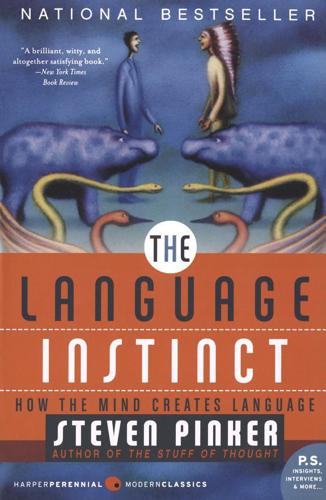
The Language Instinct: How the Mind Creates Language
by
Steven Pinker
Published 1 Jan 1994
The verb to be is a particular source of illogic, because it identifies individuals with abstractions, as in Mary is a woman, and licenses evasions of responsibility, like Ronald Reagan’s famous nonconfession Mistakes were made. One faction seeks to eradicate the verb altogether. And supposedly there is a scientific basis for these assumptions: the famous Sapir-Whorf hypothesis of linguistic determinism, stating that people’s thoughts are determined by the categories made available by their language, and its weaker version, linguistic relativity, stating that differences among languages cause differences in the thoughts of their speakers. People who remember little else from their college education can rattle off the factoids: the languages that carve the spectrum into color words at different places, the fundamentally different Hopi concept of time, the dozens of Eskimo words for snow.
…
Bybee’s “Morphology: A study of the relation between meaning and form.” Language, 63, 115–129. Atran, S. 1987. Folkbiological universals as common sense. In Modgil & Modgil, 1987. Atran, S. 1990. The cognitive foundations of natural history. New York: Cambridge University Press. Au, T. K.-F. 1983. Chinese and English counterfactuals: the Sapir-Whorf hypothesis revisited. Cognition, 15, 155–187. Au, T. K.-F. 1984. Counterfactuals: In reply to Alfred Bloom. Cognition, 17, 155–187. Baillargeon, R. In press. The object concept revisited: New directions in the investigation of infants’ physical knowledge. In C. Granrud (Ed.), Visual perception and cognition in infancy.
…
Environmental preference in a knowledge-seeking, knowledge-using organism. In Barkow, Cosmides, & Tooby, 1992. Kasher, A. (Ed.) 1991. The Chomskyan turn. Cambridge, Mass.: Blackwell. Katzner, K. 1977. The languages of the world. New York: Routledge & Kegan Paul. Kay, P., & Kempton, W. 1984. What is the Sapir-Whorf hypothesis? American Anthropologist, 86, 65–79. Kaye, J. 1989. Phonology: A cognitive view. Hillsdale, N.J.: Erlbaum. Keenan, E. O. 1976. Towards a universal definition of “subject.” In C. Li (Ed.), Subject and Topic. New York: Academic Press. Kegl, J. & Iwata, G. A. 1989. Lenguage de Signos Nicaragüense: A pidgin sheds light on the “creole?”
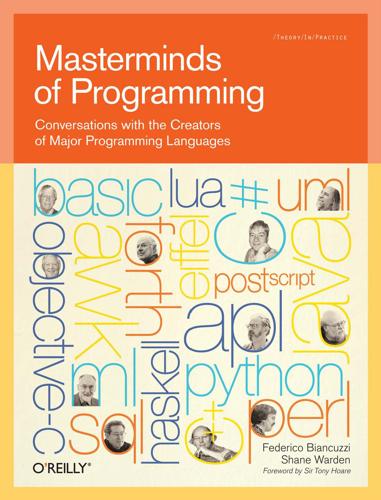
Masterminds of Programming: Conversations With the Creators of Major Programming Languages
by
Federico Biancuzzi
and
Shane Warden
Published 21 Mar 2009
Grady: The question you raise is an old one, albeit cast in a new form: linguists and cognitive scientists have pondered that very question for decades, with much of the controversy swirling around what is called the Sapir-Whorf hypothesis. Edward Tufte similarly points out that the right representation can collapse complexity, making it possible to meaningfully reason about complex information in an abstract way. To explain further, the Sapir-Whorf hypothesis (from the linquists Edward Sapir and Benjamin Whorf) posits a connection between language and thought: the syntactic and semantic elements of a spoken language impacts how a person can perceive the world and reason about it (and vice versa).
…
It’s obvious where the state is in objects; that’s what objects are for. It’s not so obvious where the state is in functional programming—the state is implicitly hidden in the stack and in the way the various monads and function calls have been arranged. So, one form of context is how you prefer to view such things as a programmer. It’s sort of a weak Sapir-Whorf hypothesis. I don’t believe in the strong version of that…. You were predestined not to believe in strong. Larry: Yeah. I chose to be predestined. Or maybe it’s just that my brain is not wired linguistically in the first place, so I do a lot of nonlinguistic thinking. And therefore I don’t think language has control of my brain.

Wordslut: A Feminist Guide to Taking Back the English Language
by
Amanda Montell
Published 27 May 2019
Thus, we need a reimagined, woman-made version of English to reverse this way of thinking. Logic like Spender’s was what many second-wave activists anticipated would guide the English language forward, helping progress toward gender equality in general along its way. Spender’s book reflects one interpretation of a principle known as the Sapir-Whorf hypothesis, which was proposed in the early twentieth century to explain the effects that a language has on its speakers’ worldview. There are two versions of this principle: the lighter (more widely accepted) one says that language merely influences thought, while the strong one (with which Spender’s theory aligns) says that language determines thought.

Cultish: The Language of Fanaticism
by
Amanda Montell
Published 14 Jun 2021
Language—both literal and figurative, well-intentioned and ill-intentioned, politically correct and politically incorrect—reshapes a person’s reality only if they are in an ideological place where that reshaping is welcome. Not to disappoint any aspiring cult leaders, but there’s a linguistic theory about the relationship between language and thought called the Sapir–Whorf hypothesis, which says that while language does influence our ability to conceive of ideas, it does not determine it. That is to say, we are still able to conceive of thoughts that don’t match the language available to us. For example, just because one person might not know the color terms “cyan” and “cerulean” (both vibrant blues) does not mean their visual systems cannot physically perceive the difference between the two.
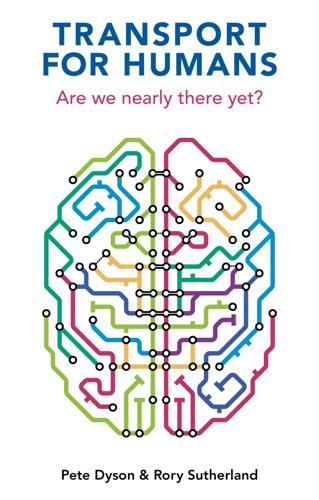
Transport for Humans: Are We Nearly There Yet?
by
Pete Dyson
and
Rory Sutherland
Published 15 Jan 2021
Norms and names People need language to make sense of the world. This idea was first proposed by classical philosophers and was more recently proven by linguists and anthropologists. Giving something a name makes it ‘a thing’. It means people can talk about it and share their intentions and experiences. This is the key principle of the Sapir–Whorf Hypothesis (also known as linguistic relativity), and it shapes our travel choices in surprising ways. Names like ‘staycation’ and ‘downsizing’ give normality and social acceptance to a behaviour that could otherwise invite awkward conversations about worrisome finances and life-stages. ‘Flexible working’ does something similar by cleverly replacing the discussion of whether we work part time or full time with when, where and how non-rigidly work can happen.
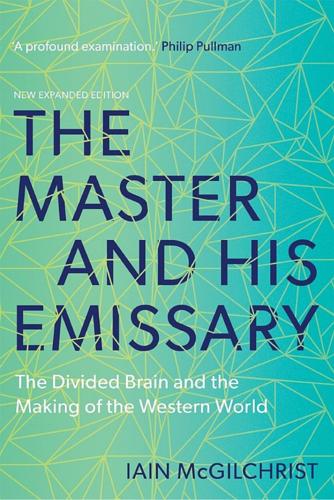
The Master and His Emissary: The Divided Brain and the Making of the Western World
by
Iain McGilchrist
Published 8 Oct 2012
Observation of child development confirms this: It has been suggested that our concepts are determined by the language that we speak (the Sapir–Whorf hypothesis). However, this is no more than a half or quarter truth. Children certainly often get the concept first and then quickly learn the word to describe it, which is the wrong way round from the Sapir–Whorf point of view. Moreover there is evidence that five-month-old babies have a concept, to do with tightness of fit, which they subsequently lose if their native language does not embody the same concept.75 The Sapir–Whorf hypothesis has partial truth – if you don’t have the word, you are likely to lose the concept; but this research demonstrates that the concept can arise without the word, and is therefore not dependent on it.
…
., (i) n. 312 roundness, see rectilinearity, versus curvilinearity Rousseau, Jean-Jacques (i), (ii), (iii) n. 48 Ruskin, John (i), (ii), (iii) Russell, Bertrand (i) Ryoan-ji (i) n. 49 Sacks, Oliver (i) Sacrobosco, Johannes de (i) sadness, right hemisphere and (i), (ii), (iii), (iv) n. 470 see also melancholy sameness versus difference, lateralisation and (i) Sapir-Whorf hypothesis (i) Sappho (i), (ii) Sass, Louis A. (i), (ii), (iii), (iv), (v), (vi) Saussure, F. de (i) savant syndromes (i) Scheler, Max (i), (ii), (iii), (iv), (v), (vi) Drang and Geist (i), (ii), (iii), (iv), (v) n. 89 on nature of poetry (i) value and (i), (ii), (iii), (iv), (v), (vi), (vii), (viii), (ix) n. 31 Schelling, F.
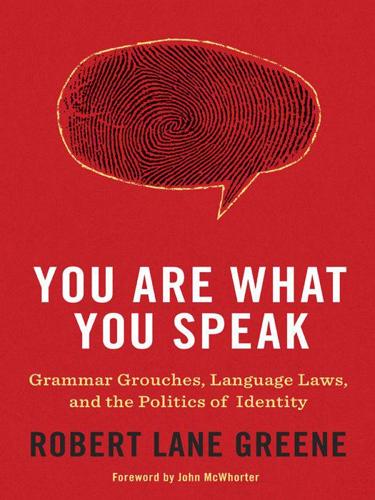
You Are What You Speak: Grammar Grouches, Language Laws, and the Politics of Identity
by
Robert Lane Greene
Published 8 Mar 2011
.… We see and hear and otherwise experience very largely as we do because the language habits of our community presuppose certain choices. Whorf expanded this idea—that a person’s access to reality is conditioned by the language he speaks. Whorf himself became so known for this that the Sapir-Whorf Hypothesis is often simply known as “Whorfianism”: other writings of Sapir indicate that he wouldn’t have gone as far as Whorf did. Famously, Whorf argued that, for example, the Hopi Indians of the American Southwest did not use the segmented, linear words for time common to the Indo-European languages.
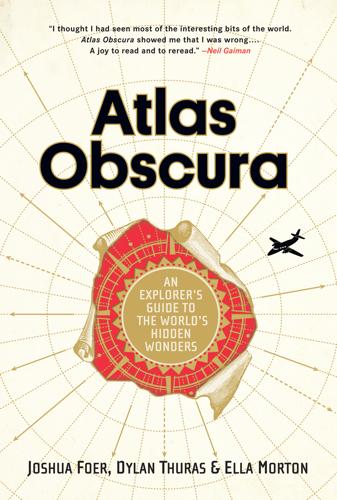
Atlas Obscura: An Explorer's Guide to the World's Hidden Wonders
by
Joshua Foer
,
Dylan Thuras
and
Ella Morton
Published 19 Sep 2016
Take the U-Bahn to Herrengasse. 48.209474 16.365771 On the eve of WWII, Esperantists still dreamed of uniting the world behind a common language. How to Say “Crazy” in Toki Pona More than 900 constructed languages have been invented since the 13th century. Some, like Esperanto and Volapük, were created with the ambitious goal of becoming a universal lingua franca. Others are meant to test the contentious Sapir-Whorf hypothesis, which holds that a person’s worldview is shaped by the vocabulary and syntax available in his or her language. Toki Pona, created by Canadian linguist Sonja Elen Kisa in 2001, is a language for minimalists. Consisting of just 123 words, the language is meant to reflect a Zen outlook on life.
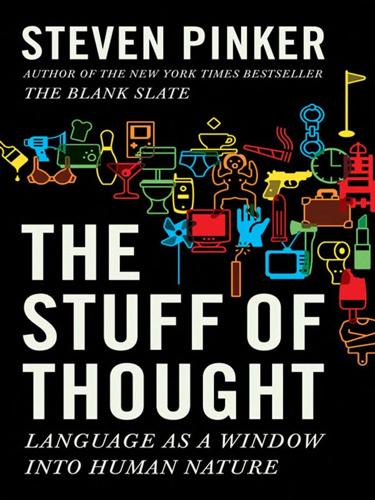
The Stuff of Thought: Language as a Window Into Human Nature
by
Steven Pinker
Published 10 Sep 2007
The idea that the language people speak controls how they think—linguistic determinism—is a recurring theme in intellectual life. It was popular among twentieth-century behaviorists, who wanted to replace airy-fairy notions like “beliefs” with concrete responses like words, whether spoken in public or muttered silently. In the form of the Whorfian or Sapir-Whorf hypothesis (named after the linguist Edward Sapir and his student Benjamin Lee Whorf), it was a staple of courses on language through the early 1970s, by which time it had penetrated the popular consciousness as well. (While writing this book, I had to stop telling people that it was about “language and thought” because they all assumed it was about how language shaped thought—the only relation between the two that occurred to them.)

Engineering Security
by
Peter Gutmann
Even though audience members, if asked, will claim that it doesn’t affect them, real-world experience indicates otherwise. The same applies for many of the other results of psychology research mentioned above — you can scoff at them, but that won’t change the fact that they work when applied in the field (although admittedly trying to apply the Sapir-Whorf hypothesis to security messages may be going a bit far [20]). You can use social validation in your user interface to guide users in their decisionmaking, and in fact a similar technique has already been applied to the problem of making computer error messages more useful, using a social recommendation system to tune the error messages to make them comprehensible to larger numbers of users [21].
…
When they use certificates to solve practical problems like providing continuity for their Keychain (see “Case Study: Apple’s Keychain” on page 622) they do it really well. Conversely, when they take existing PKI theory and try and implement it, they do it rather poorly, Figure 188 being one example (the screenshot dates from 2013, and all of the certificates in the chain are valid and non-expired). The Sapir-Whorf hypothesis (also known as the principle of linguistic relativity) proposes that our thinking is shaped by the language that we express ourselves in [402], perhaps the same applies here, with trying to think in PKI able to stunt the creativity of even a famously creative company156. This is why “PKI Design Recommendations” on page 729 recommends taking just enough PKI to do what you need to and ignoring the rest.

Artificial Intelligence: A Modern Approach
by
Stuart Russell
and
Peter Norvig
Published 14 Jul 2019
Natural languages also suffer from ambiguity, a problem for a representation language. As Pinker (1995) puts it: “When people think about spring, surely they are not confused as to whether they are thinking about a season or something that goes boing—and if one word can correspond to two thoughts, thoughts can’t be words.” The famous Sapir-Whorf hypothesis (Whorf, 1956) claims that our understanding of the world is strongly influenced by the language we speak. It is certainly true that different speech communities divide up the world differently. The French have two words “chaise” and “fauteuil,” for a concept that English speakers cover with one: “chair.”
…
., 637, 1105 Samuelson, W., 639, 1110 Sanchez-Lengeling, B., 1027, 1111 Sanders, P., 126, 1093 Sandholm, T., 48, 224, 637–639, 841, 1089, 1096, 1111 Sang, T., 474, 1111 Sanna, R., 836, 1096 Sanskrit, 356, 903 Santorini, B., 880, 903, 1105 SAPA (planning system), 401 Sapir, E., 875, 1111 Sapir-Whorf hypothesis, 270 Saraswat, V., 189, 1115 Sarawagi, S., 906, 1111 Sargent, T. J., 872, 1111 SARSA (state-action-reward-state-action), 853 Sartre, J.-P., 636, 1111 Sastry, G., 872, 1111 Sastry, S., 79, 667, 868, 872, 971, 986, 1098, 1107, 1108, 1111 SAT, 241 Satheesh, S., 837, 1111 Satia, J. K., 588, 1111 satisfaction (in logic), 232 satisfiability, 240, 266 satisfiability threshold conjecture, 254 satisficing, 28, 108 SATMC (logical reasoning system), 268 Sato, T., 329, 666, 1111, 1114 SATPLAN, 262 Sattigeri, P., 1047, 1060, 1087 saturation, 322 SATZ (logical reasoning system), 266 Saul, L.

Code Complete (Developer Best Practices)
by
Steve McConnell
Published 8 Jun 2004
You can draw a parallel between natural languages such as English and programming languages such as Java and C++. In the case of natural languages, the linguists Sapir and Whorf hypothesize a relationship between the expressive power of a language and the ability to think certain thoughts. The Sapir-Whorf hypothesis says that your ability to think a thought depends on knowing words capable of expressing the thought. If you don't know the words, you can't express the thought and you might not even be able to formulate it (Whorf 1956). Programmers may be similarly influenced by their languages. The words available in a programming language for expressing your programming thoughts certainly determine how you express your thoughts and might even determine what thoughts you can express.
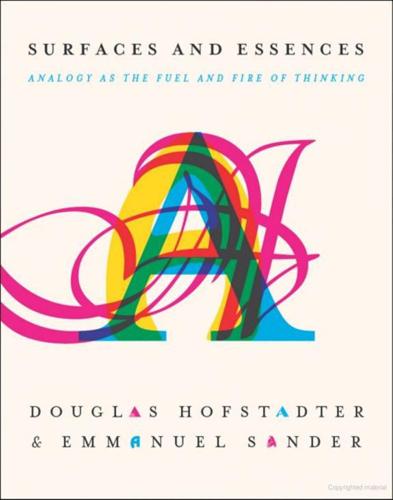
Surfaces and Essences
by
Douglas Hofstadter
and
Emmanuel Sander
Published 10 Sep 2012
The humorous volumes by Chiflet and Whistle (actually just one person), as well as the books by Glucksberg and by Langlotz, deal with idiomatic expressions; Brézin-Rossignol, Schank, and Visetti consider the categories of proverbs and fables, while Benserade, La Fontaine, Morvan de Bellegarde and Phædrus are relevant to our section on Æsop’s fable “The Fox and the Grapes”. Festinger’s book is a classic on cognitive dissonance. The books by Carroll and by Sapir deal with the Sapir–Whorf hypothesis, and the volume by Atran and Medin covers the way that culture channels human language and thought. Finally, the books by Flynn and by Sternberg tackle the topic of intelligence. Aitchison, Jean (1994). Words in the Mind: An Introduction to the Mental Lexicon (second edition). Oxford: U.K.: Blackwell Publishers.